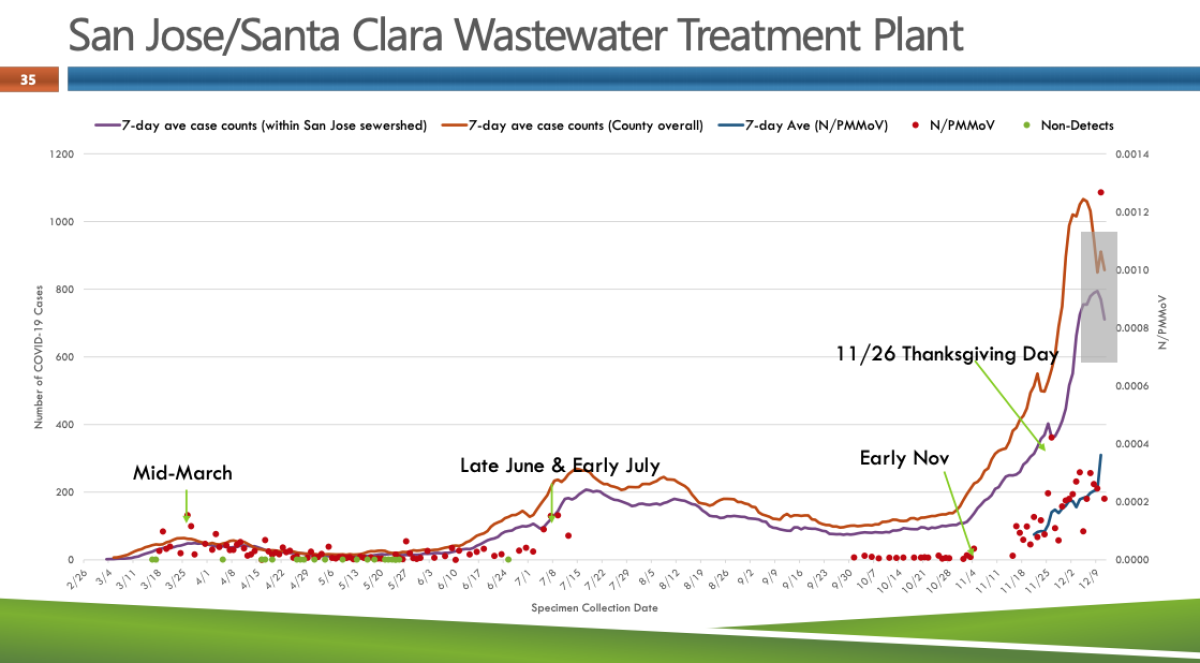Skyrocketing coronavirus levels in California sewage point to rapid spread of virus
- Share via
Sewage data analyzed in Silicon Valley wastewater treatment plants confirms that the latest wave of coronavirus infections is sharply worse than the ones in the spring and summer.
Officials in Santa Clara County have been routinely testing solid waste samples in sewage to detect levels of the coronavirus that causes COVID-19 as part of a project funded by Stanford University.
The virus can be found in human stool and detected in people who are not showing signs of illness, and scientists have investigated whether testing wastewater can reveal trends about how common the coronavirus is in the community.
Preliminary evidence shows the method can be helpful. Analysis of settled solid matter in wastewater conducted in the spring and early summer showed that as virus levels in wastewater went up, so did weekly coronavirus case rates in the region.
Now, the levels of virus in recent weeks is far greater than seen in either of the prior two waves of the pandemic.
“In early November, you can see it really skyrocketed. It has taken off, which again indicates widespread infections in the community,” Michael Balliet, director of the Santa Clara County Department of Environmental Health, told the county’s Board of Supervisors this week. “On Thanksgiving Day, we had one of our highest detections in the sample. And then a few days ago, it skyrocketed further above that.”
Some of the highest virus levels were detected on Thanksgiving Day and in more recent days, he said.

“It continues to be a high, high, high level detected in wastewater,” Balliet said, “which is very concerning because it’s orders of magnitude greater than where we were at — even in the June timeframe.”
There has been a growing focus on wastewater as a way of tracking the coronavirus.
Researchers near — from Stanford to the University of Arizona — and far, from Australia to Paris — have been ramping up wastewater analyses to track the spread of SARS-CoV-2, the virus that causes COVID-19.
UC San Diego has been testing its campus’ sewage for signs of the coronavirus as a way of tracing infections.
This summer, officials found the coronavirus in the sewage at Yosemite National Park, helping confirm cases there.
More to Read
Sign up for Essential California
The most important California stories and recommendations in your inbox every morning.
You may occasionally receive promotional content from the Los Angeles Times.












